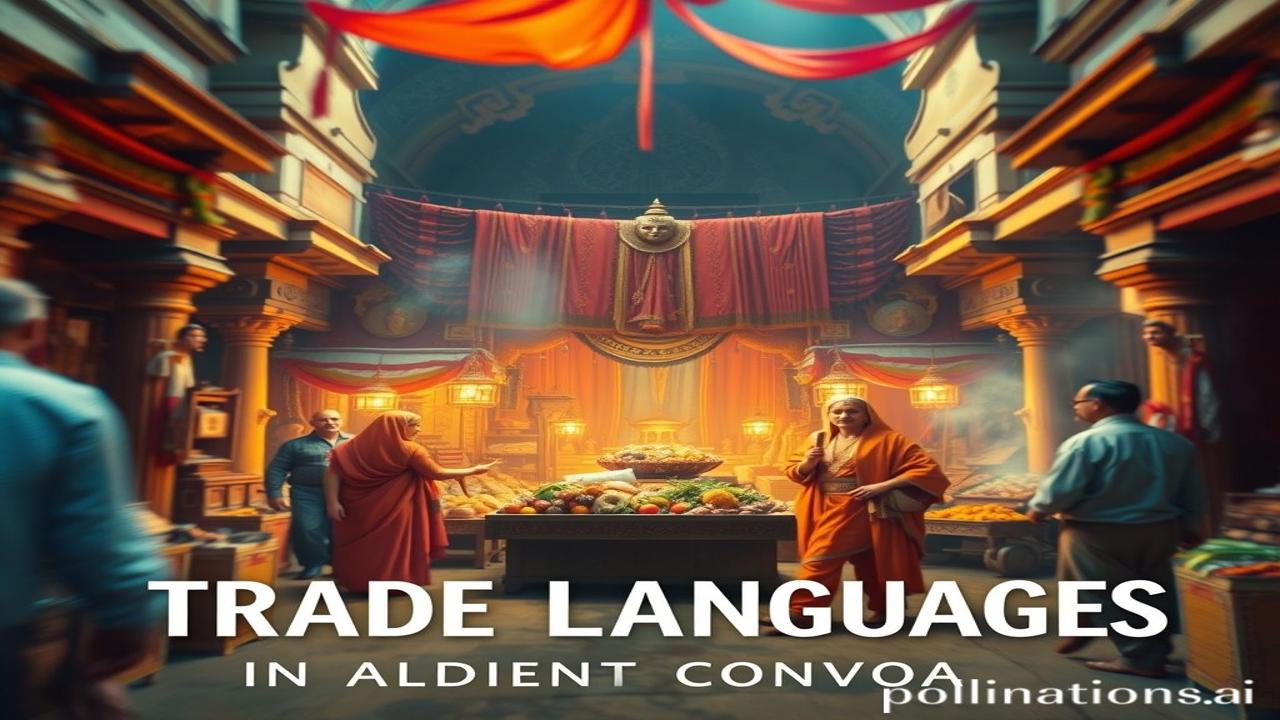Trade Languages in Ancient Indian Commerce: The Whispers of Bazaar
Kabhi socha hai, agar hum pichle hazaron saal peeche chale jayein, toh woh bazaar kaise dikhte honge? Na sirf rang birangi dukaane, balki ek aisi dhwani, ek aisa shore, jahan har boli ka swar milta tha. Imagine the spice-laden air, the clinking of coins, and the murmur of a hundred different tongues. This wasn’t just about buying and selling; it was about connection, communication, and the very threads that wove ancient India together. This is the story of trade languages, the unsung heroes of our rich commercial past.
Bharat ki Tijarat: Bhashaon ka Sangam (Historical Context)
So, what exactly are trade languages? Think of them as the ‘lingua franca’ of the ancient world – languages that developed or were adopted as a common means of communication between people who spoke different native languages. In ancient India, where numerous kingdoms thrived and trade routes crisscrossed the land, the need for a shared language was crucial for efficient commerce.
This phenomenon blossomed from around the 3rd century BCE to the 7th century CE, a golden age of Indian trade fueled by empires like the Mauryas, the Satavahanas, and the Guptas. Imagine the sheer scale of trade – from the ports along the coasts to the bustling cities of the interior. Traders from Rome, Greece, Persia, and even Southeast Asia flocked to India, eager to acquire its spices, textiles, and precious stones.
Why was this important? It wasn’t just about economic gain. These trade languages facilitated cultural exchange, allowing ideas, philosophies, and artistic styles to spread across vast distances. They helped to build bridges between diverse communities, fostering a sense of interconnectedness that shaped the very fabric of ancient India.
Bazaar ka Haal: Log aur Unki Kahaniyaan (Human Element)
Let’s dive deeper and paint a picture of everyday life. Picture a bustling marketplace in Taxila, a major hub on the ancient Silk Road. Amongst the merchants, craftsmen, and customers, you’d likely find a dwibhashi (someone who speaks two languages), acting as a translator.
Imagine a conversation between a Roman trader and an Indian merchant:
Roman Trader (speaking a rough version of Prakrit): “Eh, sresthin! (Respected merchant!) Tumhara kapas… bahut sundar! (Your cotton… very beautiful!) Kitna daam?”
Indian Merchant (responding in the same Prakrit-infused tongue): “Maharaj! Iski kimat… das swarna mudra prati dhoti! (Sir! Its price… ten gold coins per dhoti!)”
These interactions weren’t always smooth. Imagine the misunderstandings, the haggling, and the sheer determination to communicate that must have filled the air. Then, there were the artisans – weavers painstakingly crafting intricate designs, jewelers meticulously setting precious stones, and farmers bringing their goods to market. All these individuals depended on these trade languages to sustain their livelihoods and connect with the wider world.
Rulers, too, played a crucial role. They often promoted the use of common languages within their kingdoms to facilitate trade and administration. Edicts were issued in these languages, reaching diverse populations and ensuring that laws and regulations were understood by all.
Aaj ki Dastak: Dharohar aur Pehchaan (Cultural Significance Today)
Even today, the echoes of these ancient trade languages resonate in modern India. Many of the words we use in our everyday language, particularly in commerce and administration, have their roots in Prakrit and Sanskrit, languages that served as vital trade languages.
Think about words like “Vyapar” (trade), “Shulka” (tax), or “Mudrika” (coin) – these are linguistic legacies from a time when India was a global economic powerhouse.
The concept of Vasudhaiva Kutumbakam (the world is one family), a core tenet of Bharatiyata, finds its roots in the interconnectedness fostered by trade and communication. The use of trade languages helped to break down barriers and create a sense of shared identity among people from different regions and cultures.
Sach ya Afwaah: Ek Hairan Karne Wala Tathya (Fun Fact or Myth-Buster)
Log samajhte hain ki Sanskrit hi sabse zaroori bhasha thi tijarat ke liye. Lekin asli sach yeh hai ki Prakrit, jo aam aadmi ki bhasha thi, tijarat mein zyada istemal hoti thi. Sanskrit, apni shuddhta aur samriddhi ke saath, dharmik aur shaikshik maamlon mein upyog hoti thi, lekin Prakrit, apni aasaan pahunch ke saath, tijarat ka dil thi. (People often think that Sanskrit was the most important language for trade. But the truth is that Prakrit, the language of the common people, was more widely used in trade. Sanskrit, with its purity and richness, was used in religious and educational matters, but Prakrit, with its easy accessibility, was the heart of trade.)
Indriyon ka Anubhav: Drishya aur Bhavnaaen (Visual & Sensory Layer)
Imagine standing in a dusty marketplace. The air smells of cardamom, cloves, and roasting nuts. You hear the rhythmic clang of a blacksmith’s hammer, the bleating of goats being traded, and the hawkers’ cries echoing through the crowd. The rough texture of handwoven cloth brushes against your skin as you navigate the narrow lanes. The sun beats down, creating a shimmering haze above the bustling scene. It is a sensory overload, a vibrant tapestry of sights, sounds, smells, and textures.
Antim Vichar: Ek Kavita (Closing Insight or Quote)
“Bhasha toh ek nadi hai, jo deshon ko jorti hai,
Tijarat toh ek safar hai, jo dilon ko jorti hai.”
(Language is a river that connects countries,
Trade is a journey that connects hearts.)
